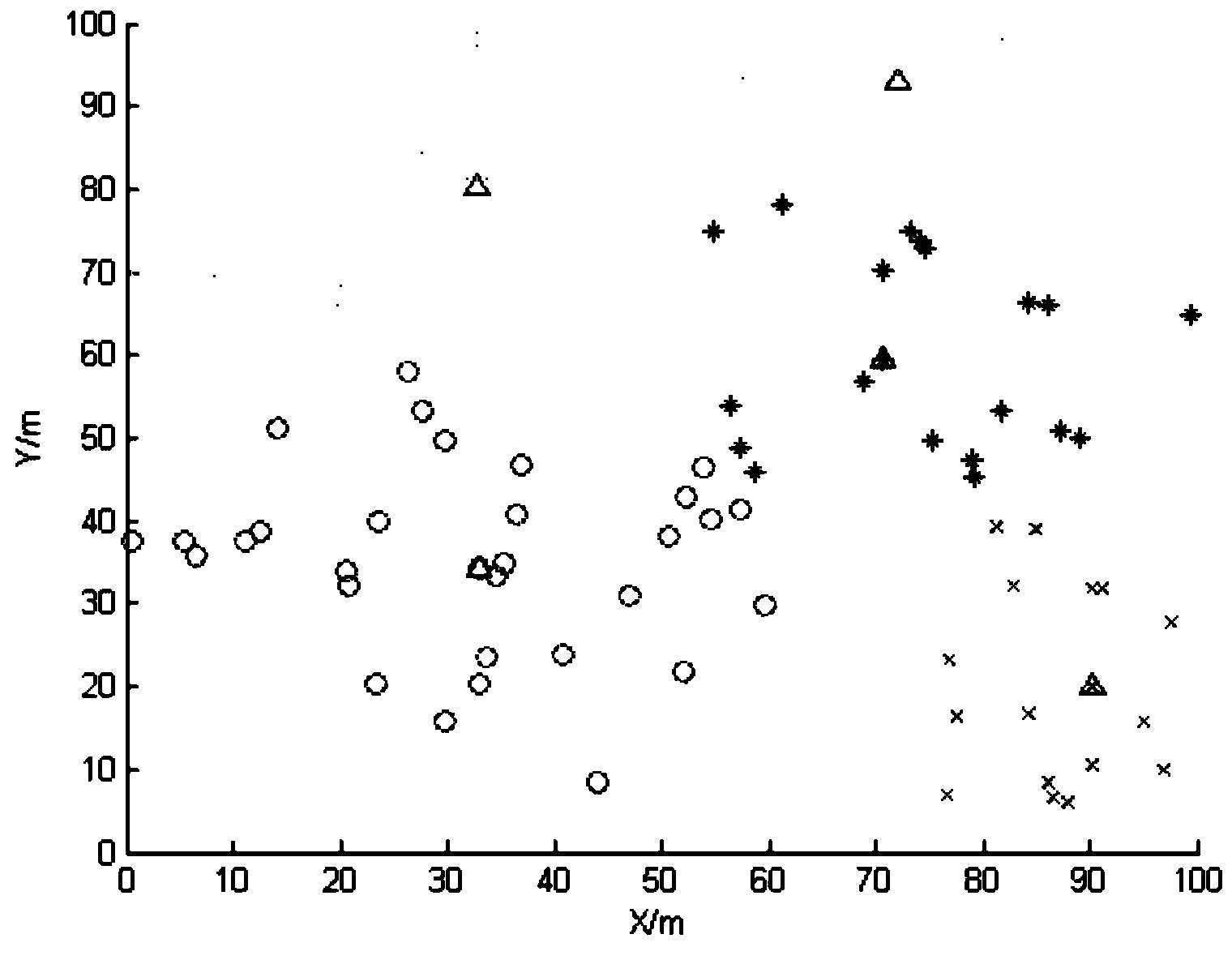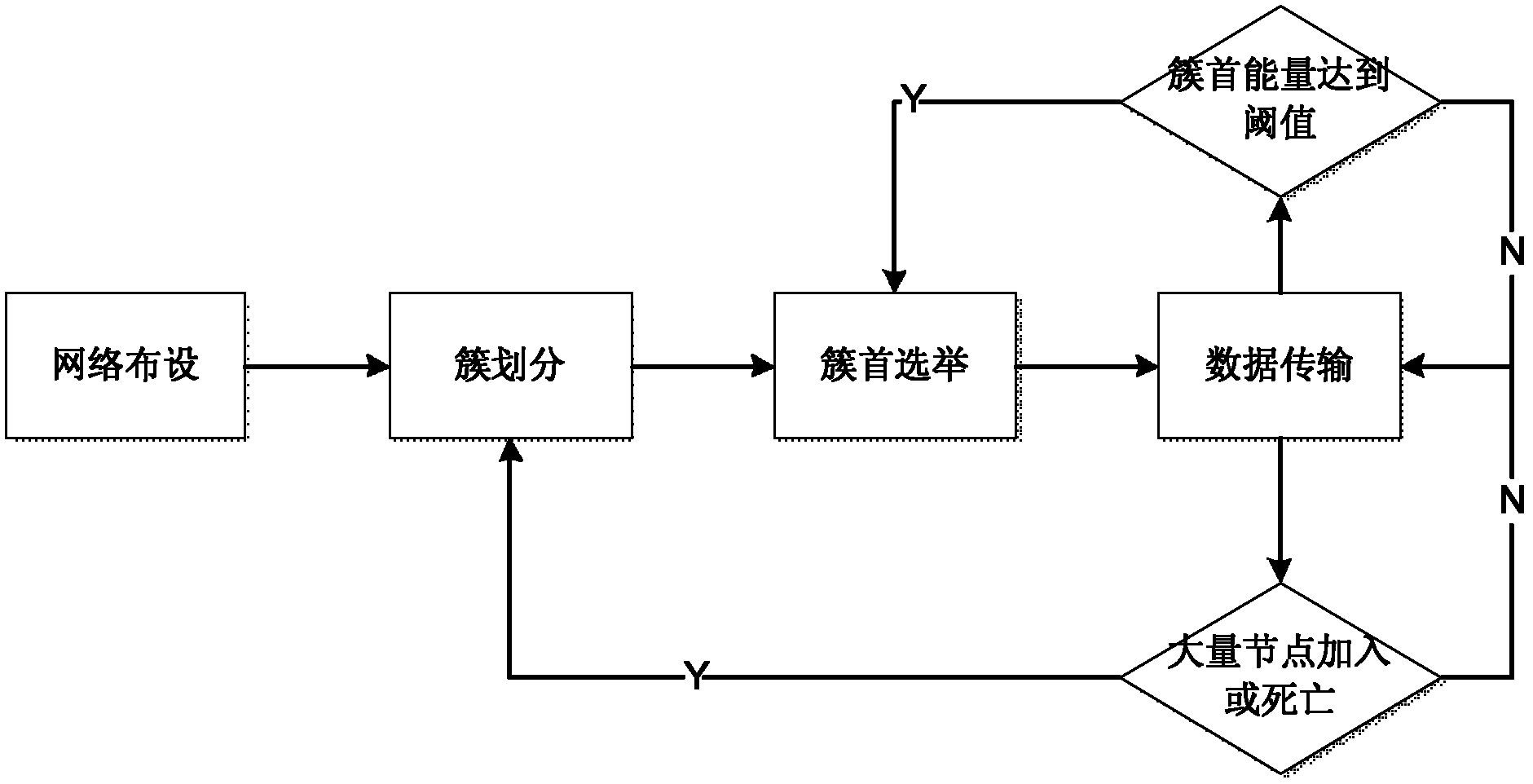Static clustering algorithm for wireless sensor network
A wireless sensor and static cluster technology, applied in network topology, wireless communication, advanced technology, etc., can solve the problems of uneven distribution of cluster heads, the same initial energy, and easy formation of pathological clusters in the LEACH protocol
- Summary
- Abstract
- Description
- Claims
- Application Information
AI Technical Summary
Problems solved by technology
Method used
Image
Examples
Embodiment
[0040] A static clustering algorithm for wireless sensor networks, such as figure 1 with figure 2 As shown, it is carried out on the basis of satisfying the following network model: ordinary nodes are homogeneous and homogeneous, with limited energy; randomly distributed in the M×M area; the locations of the sink nodes and ordinary nodes are fixed; the energy supply of the sink nodes is continuous, and the convergence Nodes can send data to the entire network. The present invention is realized in the following ways:
[0041] 1. Static cluster division
[0042] 1) Network initialization
[0043] After the network node is deployed, the sink node sends the initialization information InitMSG to the entire network, which contains the sink node transmission power P Init , The nodes in the network receive InitMSG according to the transmission power P of the sink node Init Loss with different backoff time T d Report its existence to the sink node; when the initial network route is not es...
PUM
 Login to View More
Login to View More Abstract
Description
Claims
Application Information
 Login to View More
Login to View More - R&D
- Intellectual Property
- Life Sciences
- Materials
- Tech Scout
- Unparalleled Data Quality
- Higher Quality Content
- 60% Fewer Hallucinations
Browse by: Latest US Patents, China's latest patents, Technical Efficacy Thesaurus, Application Domain, Technology Topic, Popular Technical Reports.
© 2025 PatSnap. All rights reserved.Legal|Privacy policy|Modern Slavery Act Transparency Statement|Sitemap|About US| Contact US: help@patsnap.com



